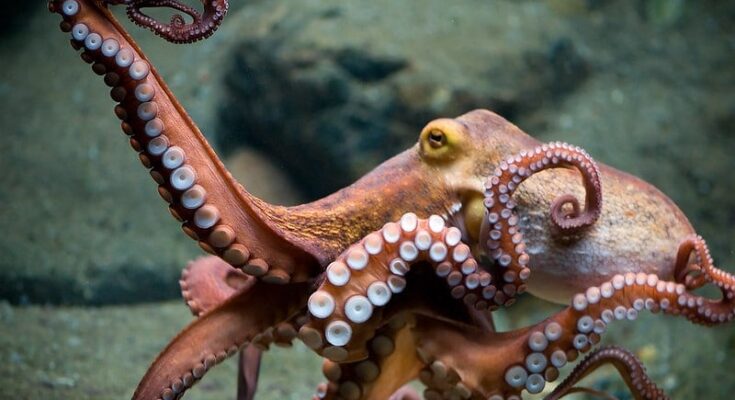Researchers have uncovered the fossil of a creature that lived 500 million years ago, shedding light on the origins of oysters and octopuses as well as other such species. Scientists from the University of Oxford were part of the team that discovered the new mollusk species.
The ancient mollusk, the Shishania aculeata, provides insight into the earliest of such animals. The fossil shows that these early mollusks were flat, shell-less slugs, covered in a protective layer of spiny armor.
Some of the fossils were found upside down, revealing that the underside of the animal was visible, with a muscular foot similar to that of a slug.
Experts believe that Shishania, once nicknamed “the plastic bag” due to its appearance, likely used this foot to slowly navigate across the seafloor.
Earliest mollusk ancestors had spiny slugs with protective armor
Associate Professor Luke Parry from Oxford’s Department of Earth Sciences, the lead author of the study, highlighted the challenge faced by scientists in understanding the common ancestor of animals as different as squid and oysters. He explained that this puzzle can’t be solved merely through the study of living species.
Shishania offers a rare glimpse into a period of mollusk evolution with few existing fossils. According to Professor Parry, long before the development of shells seen in today’s snails and clams, this discovery reveals that the earliest mollusk ancestors were in fact spiny slugs with protective armor.
Chinese scientists have unveiled the origins of Shishania aculeata, a species of mollusk existing 514 mln years ago, through the well-preserved anatomical structure of #fossils unearthed in SW China's Yunnan, offering fresh insight into the early evolution of mollusks. pic.twitter.com/0Pw3jJte03
— China Science (@ChinaScience) August 5, 2024
The newly identified species was uncovered in fossils from eastern Yunnan Province, located in southern China. These fossils are from the early Cambrian period, which dates back roughly 514 million years.
Shishania fossils are small, only a few centimeters in length, and are covered with tiny, spiky bumps. Moreover, these bumps are made of chitin, the same substance that forms the shells of crabs, insects, and certain mushrooms found today.
Shishania stands out from most molluscs because it didn’t have a shell to protect itself. This suggests that it represents a very early stage—before shells became common—in the evolution of these animals.
Diversity of mollusks in modern times
Today, mollusks are found in many different forms, including snails, clams, and even highly intelligent creatures such as squids and octopuses.
This variety developed rapidly a long time ago, leaving behind very few fossils that can reveal anything about the early stages of mollusk evolution, as reported by The Independent.
Guangxu Zhang, a recent PhD graduate from Yunnan University in China and the first author of the study, shared his initial thoughts on discovering the fossils. He noted that the specimens, about the size of his thumb, didn’t stand out at first.
However, when he examined them under a magnifying glass, he noticed they were strange and spiny, unlike other fossils he had previously seen.
Zhang initially nicknamed the fossils “the plastic bag” because of their shape. However, after detecting more of these fossils and analyzing them in the lab, he realized they were actually a type of mollusk.



